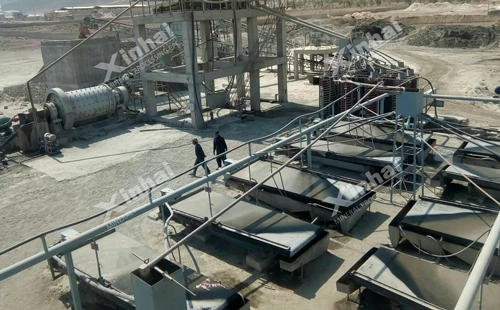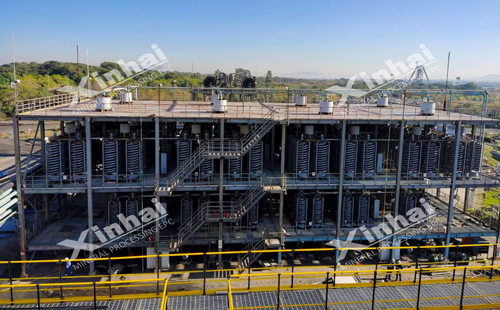
A. Well, chromite? That's the go - to "ingredient" for chromium, no doubt about it. It's the prime source we depend on to obtain this essential element.
B. Alright, let's dive into the chemical composition of chromite. That FeCr₂O₄ and its various forms? It's really something else. I vividly remember my college years when I first got into this stuff. It was like being on a quest to solve a super intricate chemical puzzle.
Every element in chromite is like a key player in a high - stakes game. The iron provides a certain stability, while chromium brings its characteristic hardness and resistance.
C. It's not some jumbled mess of atoms. Oh no, it's a highly organized and systematic arrangement. This specific structure isn't just for show; it has a profound impact on how chromite reacts in various circumstances. Whether it's under high pressure during mining or when it's being processed in a refinery, this crystal structure dictates its every move, so to speak.
D. And then there are the physical properties of chromite. The color, luster, hardness, and specific gravity? These are like the fingerprints of chromite.

1. South Africa is just huge in the chromite game, holding around 70% of the world's reserves. It's like the big boss of chromite. The Bushveld Igneous Complex there is where a lot of it is located. I've heard stories from miners working there about how vast and rich those deposits are.
2. Kazakhstan also has significant reserves. They've been steadily making their mark in the global chromite production scene.
3. India is another major player. Their reserves are no joke, and they contribute a good amount to the world's chromite supply.
4. Turkey, with its unique podiform deposits, is also in the mix. Their production methods and deposits have their own characteristics.
5. And then there are other countries like Finland, Zimbabwe, Oman, etc. They might not have as much as the big ones, but they still play a part in the overall global picture.
1. Stratiform deposits, like those in the Bushveld Complex, are like these massive, layered treasure chests of chromite. They're formed in a particular geological process and contain a lot of high - quality chromite.
2. Podiform deposits, seen in places like Turkey, Albania, and Kazakhstan, are different. They have their own shape and characteristics, and miners need to adapt their techniques to extract chromite from these.
3. Laterites, although a minor historical source, still have their place in the story. They might not be as important now, but they were once significant in the chromite supply chain.
C. Keeping track of global chromite ore and concentrate production statistics is crucial. It gives us an idea of who's producing how much and how the market is evolving.

1. Chrome mining in South Africa is a huge job creator. It provides livelihoods for thousands of people, from the miners deep in the mines to those working in related industries. I've seen how whole communities rely on these jobs.
2. The export revenue it generates is no small feat either. It's a major contributor to South Africa's foreign exchange earnings.
3. Overall, it drives the economic development of the country.
1. The Bushveld Igneous Complex, especially in the Steelpoort Valley, is a hotbed of chrome mining. The scale of operations there is just mind - boggling.
2. Limpopo Province also has a significant presence of chrome mines. The mining activities there have shaped the local economy and environment.
3. Mpumalanga Province is another important region. The mines here contribute to the overall chrome production of South Africa.
4. North West Province rounds off the major mining regions. Each has its own unique challenges and opportunities for the mining companies.
C. Key Chrome Mining Companies in South Africa
1. Sefateng Chrome Mine has been in the game for a while. They've built a reputation for their operations and production levels.
2. Assmang Ltd is another well - known name. They've got their hands in various aspects of chrome mining and processing.
3. Bauba Platinum, although also involved in platinum, has a stake in chrome mining too. It shows how the mining industries in South Africa are interconnected.
4. Samancor Chrome Ltd is a major player. Their production capacity and quality of output are highly regarded.
5. Clover Alloys (SA) Ltd has its own niche in the market, contributing to the alloy production side of the chrome industry.
6. Shandong Xinhai Mining Technology & Equipment Inc is a company which provides EPCM+O services for mine owner who wants to build chrome and chromite mining plant
Discover advanced chrome ore gravity processing plants designed for high recovery rates and low operational costs. Learn about key technologies, benefits, and setup tips for optimal mineral extraction
Modern metallurgical operations rely on precisely engineered iron processing workflows to meet global steel demand. Drawing on decades of industrial refinement, current extraction protocols balance technical precision with environmental stewardship. Recent International Energy Agency reports indicate that optimized processing routes can reduce energy consumption by 18-22% compared to legacy systems.
